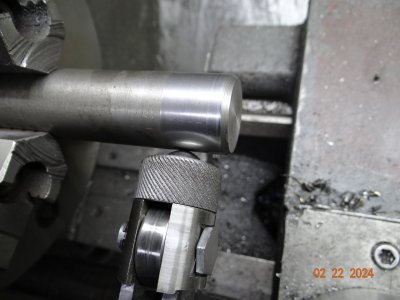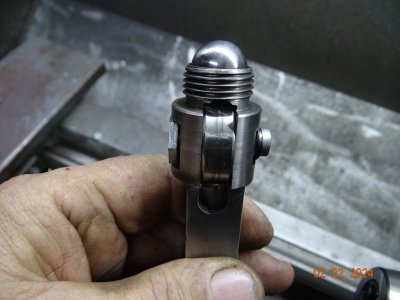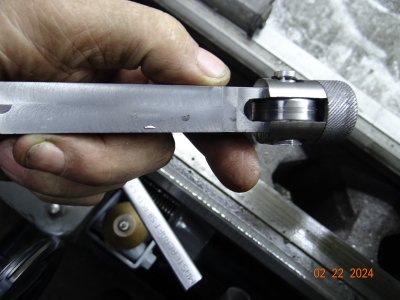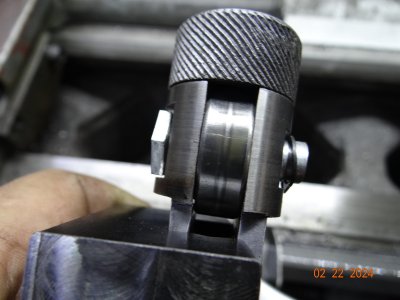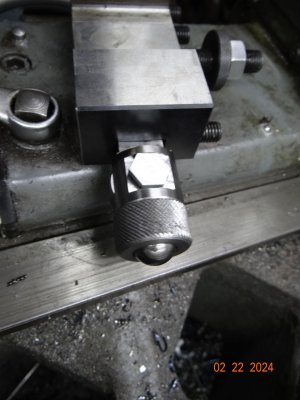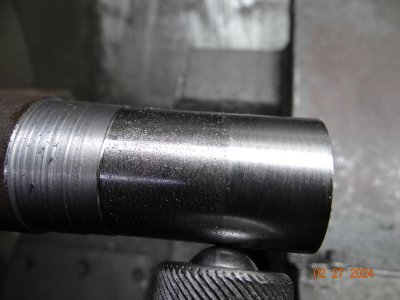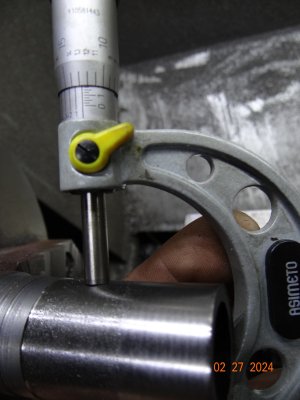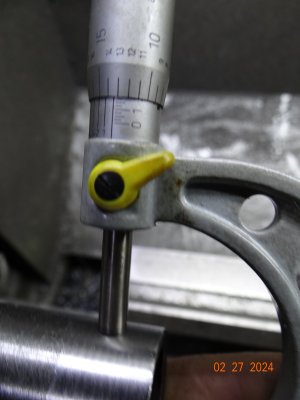Ironman
Ultra Member
I wanted to make one of those ball burnishing tools, and I tried to copy things from the video. Thought I had done all the figgerin' and measuring right, and then proceeded to turn a nice piece of CR stock into blue chips and scrap metal. The axle measurement was off so the ball cap could not seat.
I sat down and pulled up the PlasmaCam software as I can work to a thou with that and read measurements. I drew the whole shebang up and then copied it in metal and it worked out well. Of course, now the hunt was on for some metal. I found a bent shaft that I had built up with welding and when it finally failed for good, the customer had me make a new one. So after a bit of wiggling around I got enough out of the shaft to use it on this. After these pictures were taken I chucked up another 3/8 bolt and made a better pin. The one in the picture is too long but I was horned up to try it out.
It works well, I tried it out on a stub of CR stock.
I sat down and pulled up the PlasmaCam software as I can work to a thou with that and read measurements. I drew the whole shebang up and then copied it in metal and it worked out well. Of course, now the hunt was on for some metal. I found a bent shaft that I had built up with welding and when it finally failed for good, the customer had me make a new one. So after a bit of wiggling around I got enough out of the shaft to use it on this. After these pictures were taken I chucked up another 3/8 bolt and made a better pin. The one in the picture is too long but I was horned up to try it out.
It works well, I tried it out on a stub of CR stock.

